Bridgestone Winter Driving Academy - The Art of Driving in the Snow

What good are winter tires if someone doesn’t know how to use them? That’s a question more drivers should be asking themselves. Being able to navigate winter conditions knowledgeably is just as important as having the right tires.
This is more or less the theme behind the Bridgestone Winter Driving School. It’s a program designed to not only showcase the brand’s tires, but also teach participants how to best drive through various winter conditions. Winter tire sales are the fifth largest segment for Bridgestone, so undertaking a driving school like this is important to the brand.
Class is in Session
Located just outside of Steamboat Springs, Colorado, the Bridgestone Winter Driving School uses a temporary, eleven turn test track that’s just under one mile in length and has over 30 feet of elevation changes. The entire course is covered in snow and ice and is roughly 60 feet wide. There are plenty of off camber turns, as well as a 300-foot skid pad that has imperfections purposely built, such as elevation changes, icy patches, and not a perfectly circular shape.
Bridgestone claims this is the oldest, longest running performance tire school in the USA. It tries to open by mid-December each year and continue through March. Of course, this is all weather dependant. The school is available at three different skill levels, for anyone from beginners to those looking to snow rally race. The program attracts people from all over the world and is open to anyone willing to enrol – even teenagers with a learner’s driving permit.
Understanding a Winter Tire
The biggest difference between an all-season tire and a winter tire is the compound formula as well as the tread design. Starting with the formula, winter tires have a compound designed not to freeze in frigid temperatures. It's designed to remain pliable and flexible even when the thermometer drops well below the freezing point.
Tread design is important for a variety of reasons. First, the actual blocks and grooves are created to pack as much snow into the tread as possible. This may seem counterintuitive, but packing snow into a tire provides more grip on snowy surfaces. As the tire rolls along, a vehicle’s weight fuses the snow in the tire with the snow on the ground. This creates bite and grip as the tire’s tread pushes off against the captured snow that’s now sticking to the ground.
Other elements of a winter tire’s tread design help with differing wintery conditions. Bridgestone utilizes a multi-cell set-up that consists of microscopic bubbles built into the tires. As the tire wears down, these bubbles are exposed, creating biting edges in the snow, or a place to disperse water in wet conditions. Sipes are also crucial to a winter tire’s layout as they help clear away water and slush as well as add grip to icy surfaces.
It’s All About Grip and Weight
Now that we’ve covered how winter tires work at a high level, back to the program. The main goal of the Bridgestone Winter Driving School is to reinforce the ‘grip rule’ through three elements:
· Vision – how well are you looking down the road.
· Adjust Speed for the Conditions – different levels of speed are needed for varying conditions.
· Separation of Controls – the car can only do one thing at a time, brake, turn, or accelerate. Don’t ask for it to do two things at once.
Another key teaching is all about weight transfer. It’s the concept of controlling a vehicle by reacting to and/or initiating the transferring of a vehicle’s weight from side-to-side and front-to-back. This technique is crucial in helping control a vehicle to limit understeer or oversteer. In winter conditions, sever oversteer will spin the car out. Severe understeer will drive the car straight off the road as the driver becomes a passenger.
Morning Session – Vehicle Control
Currently, the Bridgestone Winter Driving School has a partnership with Toyota, which means we are using a trio of that brand’s vehicles – a Camry, RAV4, and 4Runner. To start the day, we got behind the wheel of a Toyota RAV4 all-wheel drive wearing Bridgestone Blizzak DM-V2.
This exercise has us get up to 25-30 mph and brake on the icy snow while going downhill. At first, we did it with the anti-lock brakes (ABS) engaged. This gives us a feel for how to control a vehicle during a snowy panic stop while the stability control and ABS help keep it straight.
Next, the ABS is manual switched off by a module the driving school has attached. We repeat the downhill braking, but now we have to modulate braking force to keep the SUV from locking up its tires and sliding. Although every modern vehicle has ABS, learning on how to brake without ABS is an important winter driving fundamental. It teaches drivers how to regain control of a sliding vehicle by using the steering and ABS at separate times.
After finishing up with the RAV4s, we headed to the skid pad to drive Toyota 4Runners also equipped with Bridgestone Blizzak DM-V2 tires. For this exercise, the SUV’s stability control and traction control are turned off. The goal for us is to enter an icy corner downhill, feel the vehicle weight transfer, get on the gas and drive-up hill. If we enter the corner too quickly or get on the gas too early, the vehicle will understeer. If we don’t initiate acceleration in time, or apply too much throttle, the 4Runner will spin-out.
Once our instructors fell we have the basics under control, we get to do a few laps around the entire snow-track to practice what we have learned. For this exercise we use both the RAV4 and the 4Runner.
Afternoon Sessions – Comparisons
For the afternoon, we head back to the track and do some head-to-head tire comparisons. Most folks who attend the Bridgestone Winter Driving School won’t be doing the tire comparisons, they’ll be focusing on learning winter driving techniques. But since we’re automotive reviewers and journalists, Bridgestone put on a bit of a showcase for us.
First up we dare driving Toyota 4Runners still equipped with the Bridgestone Blizzak DM-V2 tires, against a set of Nokian Hakkapeliitta winter tires.
After running the back-to-back tests, I find both tires perform very good in these conditions. The only real variation I find is during cornering and braking. The Hakkapeliitta is more prone to over rotate the rear of the vehicle during mid corner weight transfer, and it allows a little more side-to-side shimmy during panic braking.
Completely subject, I feel more confident driving the Blizzak which is a testament, and proof, that the best way to tackle winter driving is to practice various techniques to learn where a vehicle's and tire's limits are. Since I have done this all morning with the Blizzaks, I am more ready to push the pace with them.
The All-Weather Comparison
After the 4Runner jaunt, we’re getting into a set of all-wheel drive Toyota Camrys. Two different head-to-head comparisons are to take place with these cars. First, we are comparing Bridgestone’s all-weather tire, the WeatherPeak, against Michelin’s all-weather tire, the Cross Climate.
For those unfamiliar with all-weather tires, they are designed to fill the gap between a winter tire and an all-season tire. It’s a tire that can be used all-summer long as well as in the winter in regions that don’t get a lot of snow. They won’t degrade in the summer and shouldn’t freeze in the winter.
Like the last comparison, the tires perform fairly equal here. But there are slight advantages to the WeatherPeak. Under hard breaking, the Michelin tire is more prone to get caught in ruts in the snow and try to pull the vehicle left or right. During harder cornering, the Bridgestone holds on a bit longer before losing traction.
A Surprise Comparison
Being a full winter driving school with snow and ice, we aren’t expecting what Bridgestone has in store to finish the day. Bridgestone refitted some of the Camrys with the brand’s high performance all-season tire, the Potenza Sport AS. The other Camrys receive the Continental Cross Contact high performance all-season.
Historically, all-season tires, especially performance ones, are not great in snowy or icy conditions. The Continental reinforces this notion as they behave in wintery conditions how I find most all-season tires. They can get through lighter conditions, but there is a sizeable void in terms of grip levels between these and proper winter tires, or even all-weather tires.
The Potenza AS’s on the other hand really surprise me. This is where the biggest difference between Bridgestone and a competitor are felt. They are easily the least-grippy Bridgestone I’m testing today, but the levels of grip during braking and cornering aren’t that far off the WeatherPeak. That's quite good for an all-season.
The Verdict
After a day of driving, we got to brush up on some winter skills as well as see how good Bridgestone’s tires are on snow and ice. Are there similarly capable tires on the market? Of course there are. Consumers have a plethora of choices these days.
But, by learning advanced driving skills, and seeing how the Bridgestone tires behave in these conditions, I’m sure many a student returns home and purchases a set of the brand’s tires for themselves – a result I’m sure Bridgestone is hoping for.
For more information on the Bridgestone Winter Driving School, visit winterdrive.com.
Become an AutoGuide insider. Get the latest from the automotive world first by subscribing to our newsletter here.

A 20+ year industry veteran, Mike rejoins the AutoGuide team as the Managing Editor. He started his career at a young age working at dealerships, car rentals, and used car advertisers. He then found his true passion, automotive writing. After contributing to multiple websites for several years, he spent the next six years working at the head office of an automotive OEM, before returning back to the field he loves. He is a member of the Automobile Journalists Association of Canada (AJAC), and Midwest Automotive Media Association (MAMA). He's the recipient of a feature writing of the year award and multiple video of the year awards.
More by Mike Schlee





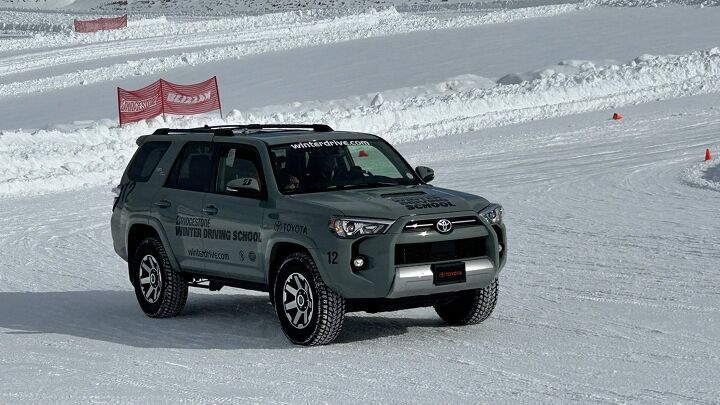






















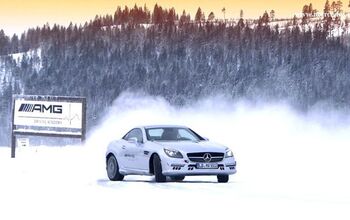
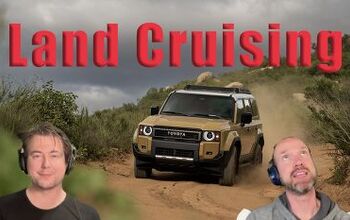

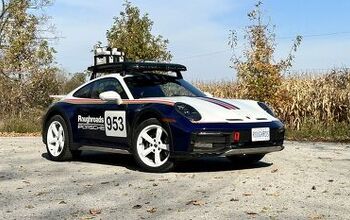
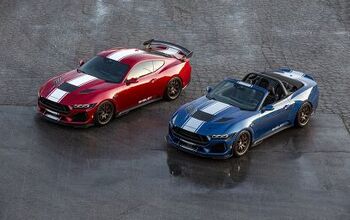
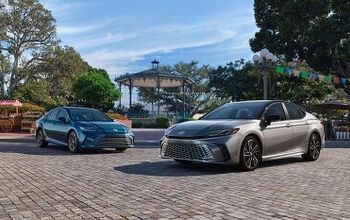
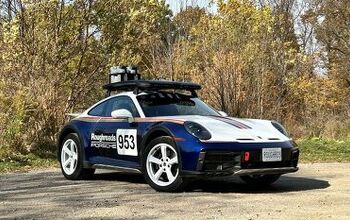
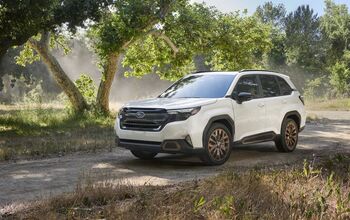


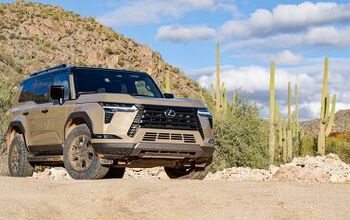


Comments
Join the conversation